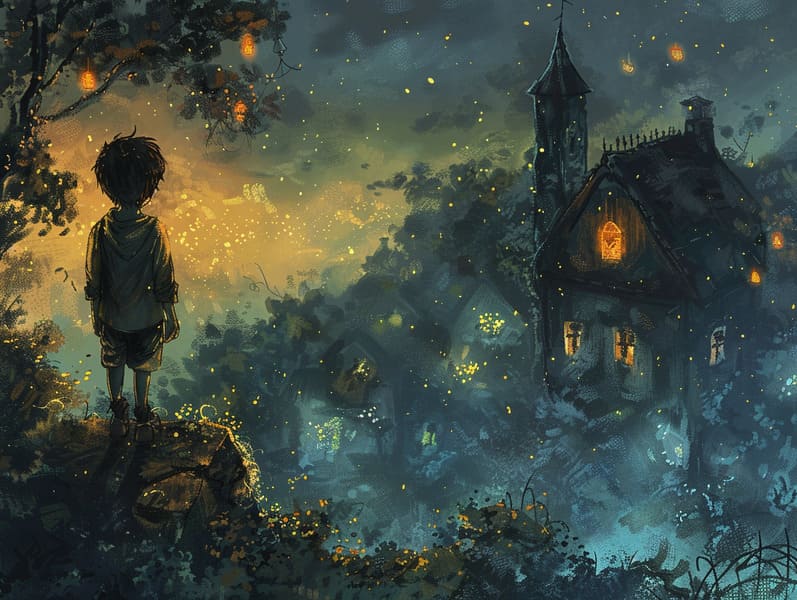The Dawn of Grimm's Fairy Tales with the Immortal Delight.
The Dawn of Grimm's Fairy Tales with the Immortal Delight.
Blog Article

Old fairy tales have old origins. These narratives have been spoken from one generation to the next well before they were ever recorded. They emerged from a variety of societies, including American traditions. They were initially transmitted among mature audiences, often carrying themes and messages pertaining to the societal norms and beliefs of the time.
The Brothers Grimm, the two Grimm brothers, were among the first to compile many of these beloved narratives. Their anthology, "Grimm's Folk Tales," included narratives like "Cinder Maid," "Little Brother and Little Sister," and "Schneewittchen," which have since become hallmarks in the world of classic fairy tales. Similarly, Andersen's whimsical narratives, such as "The Mermaid," and "The Duckling's Story," have captured hearts worldwide, ensuring their place in the pantheon of famous fairy tales.
Despite their age, classic fairy tales remain as important as ever, especially as nighttime stories for kids. These fantastical tales are now available in various formats, including richly illustrated books, whimsical animations, and online storybooks.
Their continued relevance can be linked to several charming aspects:
Life Lessons: Classic fairy tales often provide important moral lessons. Stories like "The Wolf and the Liar" teach the importance of honesty, while "The Story of the Tortoise and the Hare" exemplify the qualities of tenacity and humility. These narratives offer little ones clear distinctions between ethical and unethical, shaping their moral compass in a mild yet profound way.
Empathy and Understanding: Timeless fairy tales frequently portray heroines facing tests and troubles, provoking young readers to connect with their struggles and encourage their triumphs. For instance, "The Tale of Beauty and the Beast" emphasizes the merit of seeing beyond the surface to know the real character of a person, advancing awareness and perception.
Cultural Perception: Many fairy tales are deeply ingrained in the cultural contexts from which they originated. Discovering these narratives can provide illuminating insights into different cultures, nurturing a sense of cultural understanding and recognition.
Inventiveness and Fantasy: The whimsical elements in traditional fairy tales—enchanted objects—spark children’s fantasy worlds. These stories guide readers to otherworldly realms, inspiring inventive ideas and a sense of excitement that endures a lifetime.
Old fairy tales are not only magical but also illuminating. They function as fascinating tools in developing various thinking and feeling skills in young readers. When old fairy tales are voiced, they strengthen language development by introducing new terms and meanings and complex sentence structures. This practice also cultivates hearing perception and focus, as children focus on every detail, prepared to see what happens next.
Furthermore, talking about the themes and characters of fairy tales can strengthen thought processes and intellectual skills. The young are shown to discover patterns, expect results, and catch on to cause and effect. These analyses also boost young readers speak out their thoughts and feelings, adding to their emotional intelligence.
In today’s technological era, the proliferation of digital storybooks has made these fairy tales more reachable than ever. Digital sites and online apps present large libraries of old fairy tales that can be seen or listened through anytime, anywhere. Fairy tales narrated are particularly sought after, sharing an engaging way for young ones to delight in these alluring stories. Voice books and read-to-me videos lead characters and settings to life, often paired with enchanting music and instrumentals that improve the story adventure.
The timeless appeal of classic fairy tales lies in their ability to modify to new eras while keeping hold of their fundamental ideas. Contemporary retellings of these get more info stories often showcase more diverse protagonists and modern settings, making them understandable to today’s audience. However, the essential messages of boldness, compassion, and lawfulness remain unchanged, continuing to impact young readers of all ages.
Timeless fairy tales also offer a sense of security and closeness. They impart upon a well-ordered narrative with a definite beginning, middle, and end, often winding up with the conclusion of conflicts and the triumph of right over wrong. This assuredness can be calming for young readers, affording a sense of firmness in an variable world.
Ancient fairy tales continue to delight and edify new generations, maintaining their grandeur and importance in modern society. As kids' bedtime tales, they put out a perfect blend of enchantment and education, advancing moral values, empathy, and creativity. The accessibility of digital storybooks and the likability of fairy tales voiced secure that these ancient stories remain within reach to new generations.
By maintaining and narrating these narratives, we continue to acknowledge the rich tapestry of legends and cultural heritage. Whether you are reading a vividly illustrated book, exploring a virtual collection, or listening on an sound book, the appeal of children's fairy tales is always within reach. These fairy tales point out of the persistent presence of narratives and its ability to bond us across time and space.
Be it you are exploring a vividly illustrated book, browsing a electronic collection, or listening on an audiobook, the elegance of timeless fairy tales is always within reach.
These stories show us of the unwavering essence of tales and its ability to tie us across time and space, forming a connection that fascinates and enlightens alike.